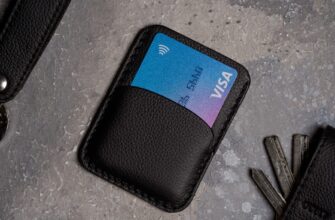Bitcoin represents digital freedom, but securing it demands fortress-like protection. Hardware wallets—physical devices storing private keys offline—are the gold standard for safeguarding BTC from hackers. Unlike software wallets or exchanges, these immune-to-malware tools put you in absolute control. This guide explores the top hardware wallets for Bitcoin, their critical features, and how to bulletproof your crypto assets.
## Why a Hardware Wallet is Non-Negotiable for Bitcoin Security
Storing Bitcoin on exchanges or software wallets risks catastrophic losses from hacks, phishing, or device failures. Hardware wallets eliminate these threats by:
– **Air-Gapped Security**: Private keys never touch internet-connected devices.
– **Tamper-Proof Design**: Transactions require physical confirmation on the device.
– **Recovery Simplicity**: Restore funds via seed phrase if the wallet is lost.
For significant BTC holdings, a $50-$200 hardware wallet is infinitely cheaper than losing your life savings to a cyberattack.
## Must-Have Features in a Bitcoin Hardware Wallet
Choosing the right device requires evaluating these essentials:
– **Secure Element Chip**: Military-grade encryption (EAL5+ certified or higher) for key storage.
– **Open-Source Software**: Allows community auditing for vulnerabilities (e.g., Trezor).
– **Multi-Currency Support**: Flexibility for BTC plus altcoins like ETH or SOL.
– **Intuitive Interface**: Clear screens and buttons for transaction verification.
– **Backup Options**: 12-24 word seed phrases + optional passphrase encryption.
– **Physical Durability**: Water/resistance and robust build quality.
## Top 5 Hardware Wallets for Bitcoin in 2023
After testing security protocols, usability, and community trust, these wallets lead the market:
1. **Ledger Nano X ($149)**
– *Pros*: Bluetooth mobile support, 100+ coin compatibility, Ledger Live app integration.
– *Best For*: Active traders needing on-the-go access.
2. **Trezor Model T ($219)**
– *Pros*: Touchscreen interface, open-source firmware, advanced features like Shamir Backup.
– *Best For*: Tech-savvy users prioritizing transparency.
3. **Coldcard Mk4 ($124)**
– *Pros*: Bitcoin-only focus, air-gapped via SD/microSD, PSBT support for multisig.
– *Best For*: Maximalists wanting ultra-secure, offline operations.
4. **BitBox02 Bitcoin Edition ($119)**
– *Pros*: Swiss-made secure chip, microSD backup, minimalist design.
– *Best For*: Beginners seeking simplicity without sacrificing security.
5. **KeepKey ($49)**
– *Pros*: Large display, ShapeShift integration, budget-friendly.
– *Best For*: Cost-conscious hodlers with smaller portfolios.
## Step-by-Step: Setting Up Your Hardware Wallet
Follow this foolproof process to activate your device:
1. **Download Official Software**: Install companion apps like Ledger Live or Trezor Suite.
2. **Initialize Device**: Connect via USB and set a strong PIN code.
3. **Backup Seed Phrase**: Write the 12-24 words on steel/cardstock—never digitally.
4. **Verify Recovery**: Re-enter seed words when prompted to confirm accuracy.
5. **Receive Bitcoin**: Generate a BTC address in the app, send a test transaction first.
Always purchase directly from manufacturers to avoid tampered devices!
## Bitcoin Hardware Wallet FAQ
**Q: Can hardware wallets be hacked?**
A: Extremely unlikely. Physical access + PIN would be required, and secure elements self-wipe after failed attempts. Online vulnerabilities are near-zero.
**Q: What if my hardware wallet breaks or gets lost?**
A: Your seed phrase is your lifeline. Use it to restore funds instantly on a new device—never store it digitally or share it.
**Q: Are hardware wallets compatible with iOS/Android?**
A: Yes! Ledger Nano X (Bluetooth) and Trezor (USB-OTG) work with mobile apps. Avoid Bluetooth models if prioritizing maximum air-gap security.
**Q: Do I need multiple wallets for different cryptocurrencies?**
A: No. Devices like Ledger/Trezor support 1,000+ coins via integrated apps. Bitcoin-only versions (e.g., Coldcard) exist for reduced attack surface.
**Q: How often should I update firmware?**
A: Immediately when notified. Updates patch vulnerabilities—delay risks exploitation.
## Final Verdict
For uncompromising Bitcoin security, hardware wallets are indispensable. The Ledger Nano X excels for mobile users, while the Coldcard Mk4 offers unparalleled offline safety for large holdings. Remember: Your seed phrase is the ultimate key—guard it like your life depends on it. Invest in a hardware wallet today; your future self will thank you.








